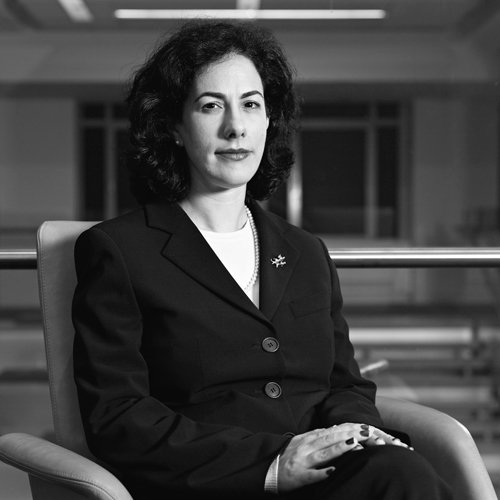When John Kuo moved into the general counsel role at Varian Medical Systems in 2005, the legal department had just five lawyers working in its Palo Alto, California, headquarters. By 2012, the Fortune 1000 company had morphed into a global force, with 6,700 employees worldwide, including 20 attorneys across three continents. Even with this enormous expansion, the legal department was operating with a flat hierarchical structure. “There was growing dissatisfaction with our services, both inside and outside the department,” Kuo says. An internal survey by the HR department confirmed the frustration. Something had to change.
In early 2013, Kuo decided to reorganize the department by business unit (oncology, imaging components, particle therapy/protons, and corporate services) instead of legal practice area and appointed a chief counsel to head each division. Spurred by the first survey and then refined by a second survey a couple years later, Kuo set out on a mission to bring his department to those important meetings and decisions, which he refers to as his “seat at the table” initiative. “Members of the legal team should be involved at the beginning of important decisions,” Kuo says. “Too often, we were brought in after considerable time and effort had been expended, only to have to tell the parties that their plan needed to be abandoned or reconsidered.” They had a reputation as the “department of ‘no.’”
Although this can be a familiar problem to many in-house attorneys, Kuo was adamant that it no longer be the case at Varian. As part of the reorganization, lawyers started attending business unit staff meetings and participating in major discussions. They became strategic partners and collaborators instead of after-the-fact obstacles—this doesn’t mean they became “yes” men and women though.
“Risks should be managed, not eliminated,” Kuo says. “It’s a balancing act, between helping the business grow and ensuring we weigh risks appropriately, that we recognize real versus perceived risks, and that we play by the rules and regulations in all the jurisdictions in which we operate.”
In its “Over the horizon: General Counsel Report” from 2014, KPMG says that the general counsel and in-house roles used to be reactive—handling disputes as they arose—however, today the position is much more proactive, taking on the task of identifying crises before they occur. Embedding lawyers throughout the company has also ended confusion over which attorneys should be tapped for various matters. Everybody has “their” attorney, their first point of contact. It hasn’t been without some hiccups, though. “The lawyers had to learn how to be business partners and team players, instead of lone wolves,” Kuo says jokingly. To help with this, he asked the HR department to conduct Myers-Briggs workshops to introduce the legal team to various personality and communication types and teach them how to modulate their styles and work better with others. “Some of them resisted at first, but it has been incredibly helpful,” he adds.
The new structure also requires Varian’s lawyers to have a broader set of skills such as basic accounting, budgeting, and human resources knowledge. As a result, Kuo now looks for more experienced attorneys to fill openings in addition to his long-held commitment to diversity. “As one of just 18 Asian-American GCs in the Fortune 1000, I am proud that 76 percent of our attorneys are women or ethnic minorities,” he says.
The changes didn’t stop there. In summer 2013, which was still early in the reorganization effort, Kuo authorized another, much larger survey, designed by Corporate Executive Board, an outside advisory firm. Three hundred Varian employees were asked to rank the importance and effectiveness of the legal department’s performance in five key areas: business partnering, compliance and risk management, core legal services, service orientation, and strategic initiatives.
“The results showed that people were confused about what the legal department did and thought we were inefficient,” says vice president and associate general counsel at Varian Keith Askoff, who oversaw the survey. “John [Kuo] held three days of off-site meetings and asked all the lawyers to describe the types of projects they tended to get and the amount of work required, so we could group them together and streamline tasks.”
Several initiatives were launched, but one immediate action was to redesign the department’s website. Once completed, it will explain who does what—complete with head shots and bios—and provide a guide on how to use the legal department. The website will also include a section for commonly used forms and documents. “The new document section addresses some of the issues head-on,” Askoff says. “It will provide a one-stop shop for nondisclosure agreements, which are one of our biggest time drains and will allow us to see where things get stuck so we can work on the bottlenecks.”
Another criticism was that people felt their matters fell into a black hole after they contacted the department. That, too, has translated into a Kuo directive: all requests must now be responded to within 48 hours. “We need to remember that the people in the company are our clients,” Kuo says. “It doesn’t mean they’re always right, but they should be treated with respect, courtesy, and responsiveness. We need to communicate more often and make everyone feel comfortable about contacting us. That will go a long way to improving our business relationships and effectiveness as a department, as well as our rankings when we conduct our follow-up survey next summer.”
In the meantime, Kuo and his chief counsel regularly solicit input on how things are going because of the success and innovation it brought to the department in the past. “I’ve already received a lot of positive feedback about the new structure and orientation,” Kuo says. “The fact that we conducted a survey and sought people’s input was really appreciated. It showed them that we cared, we were listening, and we are trying to be better business partners.”

